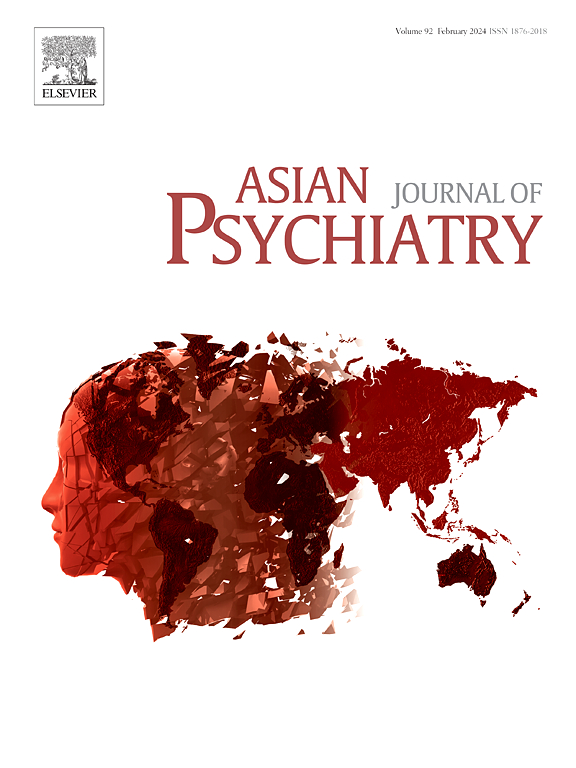Therapeutic potential of ketamine in management of epilepsy: Clinical implications and mechanistic insights
IF 3.8
4区 医学
Q1 PSYCHIATRY
引用次数: 0
Abstract
Epilepsy, a widespread neurological disorder, affects approximately 50 million people worldwide. This disorder is typified by recurring seizures due to abnormal neuron communication in the brain. The seizures can lead to severe ischemia and hypoxia, potentially threatening patients' lives. However, with proper diagnosis and treatment, up to 70 % of patients can live without seizures. The causes of epilepsy are complex and multifactorial, encompassing genetic abnormalities, structural brain anomalies, ion channel dysfunctions, neurotransmitter imbalances, neuroinflammation, and immune system involvement. These factors collectively disrupt the crucial balance between excitation and inhibition within the brain, leading to epileptic seizures. The management of treatment-resistant epilepsy remains a considerable challenge, necessitating innovative therapeutic approaches. Among emerging potential treatments, ketamine–a drug traditionally employed for anesthesia and depression–has demonstrated efficacy in reducing seizures. It is noteworthy that, independent of its anti-epileptic effects, ketamine has been found to improve the balance between excitatory and inhibitory (E/I) activities in the brain. The balance is crucial for maintaining normal neural function, and its disruption is widely considered a key driver of epileptic seizures. By acting on N-methyl-D-aspartate (NMDA) receptors and other potential mechanisms, ketamine may regulate neuronal excitability, reduce excessive synchronized neural activity, and counteract epileptic seizures. This positive impact on E/I balance reinforces the potential of ketamine as a promising drug for treating epilepsy, especially in patients who are insensitive to traditional anti-epileptic drugs. This review aims to consolidate the current understanding of ketamine’s therapeutic role in epilepsy. It will focus its impact on neuronal excitability and synaptic plasticity, its neuroprotective qualities, and elucidate the drug’s potential mechanisms of action in treating epilepsy. By scrutinizing ketamine's impact and mechanisms in various types of epilepsy, we aspire to contribute to a more comprehensive and holistic approach to epilepsy management.
氯胺酮治疗癫痫的潜力:临床意义和机理认识。
癫痫是一种广泛存在的神经系统疾病,全世界约有 5000 万人患有这种疾病。这种疾病的典型特征是由于大脑神经元交流异常而导致癫痫反复发作。癫痫发作会导致严重的缺血和缺氧,对患者的生命构成潜在威胁。然而,经过适当的诊断和治疗,多达 70% 的患者可以在没有癫痫发作的情况下生活。癫痫的病因复杂且多因素,包括遗传异常、大脑结构异常、离子通道功能障碍、神经递质失衡、神经炎症和免疫系统参与。这些因素共同破坏了大脑内兴奋和抑制之间的重要平衡,导致癫痫发作。治疗耐药性癫痫仍然是一项巨大的挑战,需要创新的治疗方法。在新出现的潜在治疗方法中,氯胺酮--一种传统上用于麻醉和抑郁的药物--已被证明能有效减少癫痫发作。值得注意的是,氯胺酮除了具有抗癫痫作用外,还能改善大脑兴奋和抑制(E/I)活动之间的平衡。这种平衡对于维持正常的神经功能至关重要,而破坏这种平衡则被广泛认为是癫痫发作的关键驱动因素。氯胺酮通过作用于 N-甲基-D-天冬氨酸(NMDA)受体和其他潜在机制,可以调节神经元的兴奋性,减少过度同步的神经活动,并对抗癫痫发作。氯胺酮对E/I平衡的积极影响增强了氯胺酮作为治疗癫痫药物的潜力,尤其是对传统抗癫痫药物不敏感的患者。本综述旨在巩固目前对氯胺酮在癫痫治疗中作用的认识。它将重点阐述氯胺酮对神经元兴奋性和突触可塑性的影响及其神经保护作用,并阐明该药物在治疗癫痫方面的潜在作用机制。通过仔细研究氯胺酮对各种类型癫痫的影响和作用机制,我们希望能为癫痫治疗提供一种更全面、更综合的方法。
本文章由计算机程序翻译,如有差异,请以英文原文为准。
求助全文
约1分钟内获得全文
求助全文
来源期刊

Asian journal of psychiatry
Medicine-Psychiatry and Mental Health
CiteScore
12.70
自引率
5.30%
发文量
297
审稿时长
35 days
期刊介绍:
The Asian Journal of Psychiatry serves as a comprehensive resource for psychiatrists, mental health clinicians, neurologists, physicians, mental health students, and policymakers. Its goal is to facilitate the exchange of research findings and clinical practices between Asia and the global community. The journal focuses on psychiatric research relevant to Asia, covering preclinical, clinical, service system, and policy development topics. It also highlights the socio-cultural diversity of the region in relation to mental health.
 求助内容:
求助内容: 应助结果提醒方式:
应助结果提醒方式:


